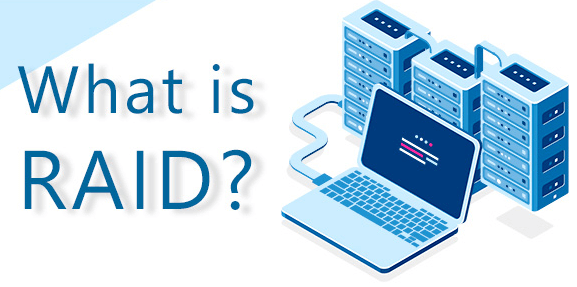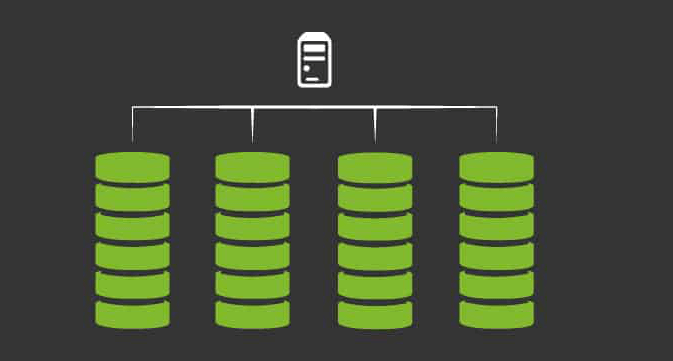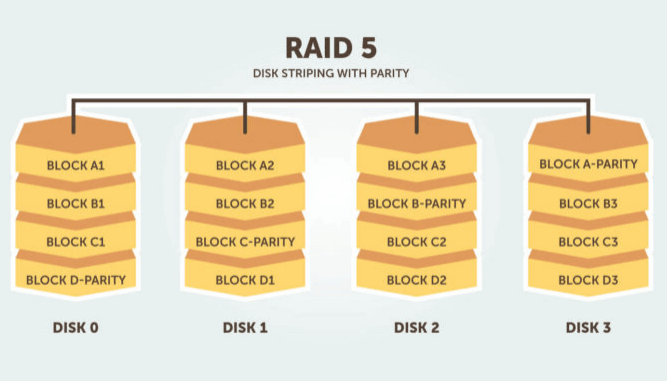Recover deleted, formatted or corrupted data from hard drive or external device.
Free TrialQuick Navigation:
The acronym RAID (redundant array of independent disks) is a storage method that employs numerous disks to expand a computer system's storage capacity, offer fault tolerance, and improve overall performance.

With RAID, users may distribute their data over many hard drives, which substantially lowers prices and boosts overall performance as compared to other older storage systems.
How RAID operates?
RAID increases performance by distributing data over numerous drives and enabling input/output processes to overlap in a balanced manner. Data redundancy improves fault tolerance because several drives extend the mean time between failures (MTBF).
When working with a RAID array, the OS treats all of the drives as if they were a single, physical drive. Disk striping or disk mirroring are methods used in RAID.
- Disk mirroring will duplicate the same data across many drives.
- Data may be distributed over numerous disk drives with the use of disk striping partitions. The storage capacity of each disk is split into blocks that range in size from 512 bytes to several gigabytes. All the disks' stripes are mixed together and addressed sequentially.
- A RAID array may also include disk striping and disk mirroring.

The stripes are normally set up to be modest (512 bytes) in a single-user system where substantial records are kept so that a single record covers all the disks and can be retrieved rapidly by reading all the disks at once.
In a multi-user system, improved performance requires a stripe broad enough to accommodate the usual or maximum size record, enabling overlapping disk I/O across drives.
RAID Levels
The fundamental RAID levels are:
RAID 0: The lowest RAID level is often referred to as striping. It performs very well while providing no redundancy. Data is spread over at least two drives, and the read/write speed and storage capacity improve over a single drive with each additional disk.
RAID 1: It is also known as mirroring because it offers the least amount of redundancy by reflecting the same data across two drives. It provides read performance that is up to double that of a single drive but does not improve write speed. As long as one disk is still functioning, stored data is always accessible.
RAID 5: A popular setup offers a decent balance between security and speed. It demands at least three disks and boosts read performance but not write performance. RAID 5 adds parity to the array, yet it only uses up the capacity of a single drive. One disk failure is also acceptable at this level.

RAID 6: It is an advanced form of RAID 5 in which a minimum of four disks is used, and dual-parity is implemented, allowing for data to be restored in the event of the failure of two disks within the array.
RAID 10: It is a combination of RAID 1 and RAID 0, and it is the most secure configuration possible. It is possible to create a RAID 0 array by combining two or more RAID 1 device, a configuration known as RAID 1 + 0.
JBOD & SPANNING: Drives in a JBOD are not part of a RAID array but are instead treated as individual logical volumes. The term "spanning" refers to the process of connecting many drives in a straight line to form a single, massive logical volume. Additional hard disks may be installed without resorting to a system reformat when operating in this mode.
Types of RAID
When it comes to deploying RAID technology, both software and hardware options are available.
Software RAID
Software raid functionality is being added to more and more common operating systems, which helps bring down the overall deployment cost. However, since software raid operates at the level of individual partitions, its complexity grows as the number of partitions increases, at which point hardware raid becomes necessary.
If there is a power outage, the software raid fails entirely, whereas the hardware raid's battery backup keeps any unsaved data from the last time the system was powered on. The software raid's Raid 0 and Raid 1 modes both operate very well.
However, the performance degrades with increasing levels and nested raid levels since it relies on CPU speed and current load.
Hardware RAID
There is a significant financial burden for businesses that choose to use hardware RAID in their data centers. However, this raid has advantages like simple administration and redundant caching in the form of batteries.
Hardware RAID can handle disk hot swapping and hot spares, which contributes to its great performance. Higher write throughputs are possible with Hardware Raid, and data loss may be quickly recovered. It is perfect for high-stakes applications that need reliable performance.
Conclusion
RAID technology implementation could seem like a demanding endeavor to someone who is unfamiliar with the concept. But when catastrophe recovery is needed, the advantages provided by its application will undoubtedly justify its technology.
Recover deleted or lost data from RAID hard drive >>
Permanently wipe data before selling or donating RAID hard drive >>